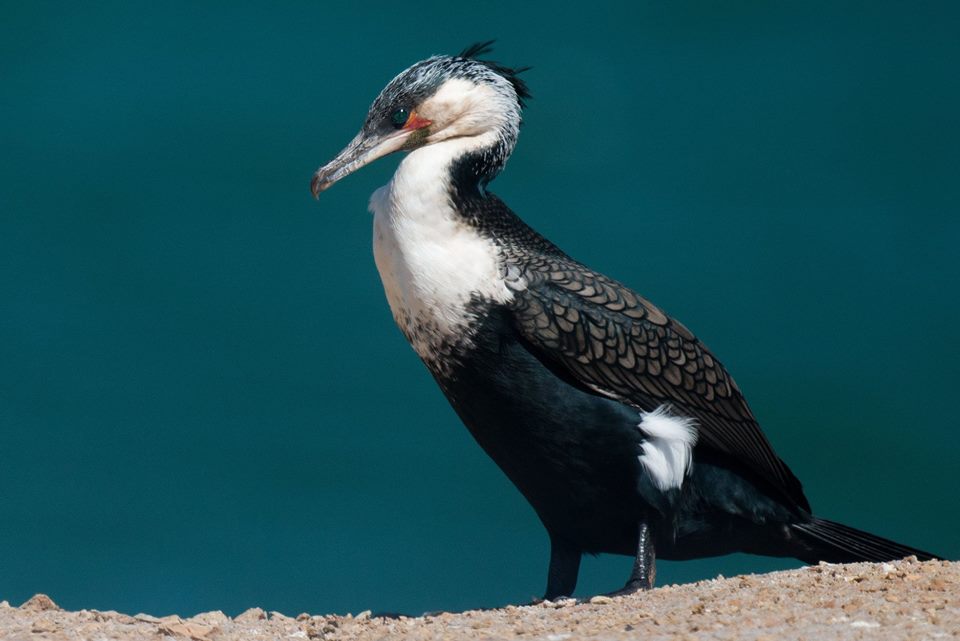Here are some rare birds and other interesting observations from the last weeks.
Iceland Gull (Larus glaucoides)
One bird present at the port of Essaouira since the end of March (M. A. Ait Baamrane). This is the 12th record for Morocco. A bird photographed at Khnifiss Lagoon on 7 February 2018 and later seen also at the nearby village of Akhfennir would be the 11th.
Update: the bird still at the port on 8 April (Enric Capalleras).

Kelp Gull (Larus dominicanus)
Two adult birds found on 1 April near Akhfennir, the village just to the north of the Khnifiss National Park (Paul Dufour, Valentin Condal & Antoine Reboul, observation.org).

Olive-backed Pipit (Anthus hodgsoni)
Two birds were present at Fôret Moulay Abdellah, an urban park located inside Rabat, on 6 March. Next day at least one bird was still present (Pedro Fernandes). Last November, Pedro found one Olive-backed Pipit at this park and three birds at Jardin d’Essais Botanique (seen between 5 and 22 Nov.). In January, he found another bird at the periphery of the city. The last seen birds were probably (or most likely) the same birds from last November that overwintered locally. Before this year, there were only 5 records.
Fieldfare (Turdus pilaris)
One bird at Dakhla Peninsula on 1 April (Enno Ebels, observation.org). This is the southernmost record of the species (at least on the western part of Africa). No known records in Mauritania.
The main highlights from Enno Ebels’s 8-day birding trip to Dakhla and Aousserd include:
- Golden Nightjar (Caprimulgus eximius): one heard and seen at Oued Jenna on the evening of 30 March.
- Sudan Golden Sparrow (Passer luteus): only one male at Oued Jenna on 29 March. The large flocks seen earlier seem to have dispersed.
- African Royal Terns (Thalasseus albididorsalis): 26 birds. It seems that (more or less) the same number is present since at least last December (See: Birding trip to Dakhla-Aousserd region by The Sound Approach.
- Seebohm’s Wheatear (Oenanthe seebohmi): this bird is not a rarity but I just found it very smart looking. Also, it looks a bit melanistic. Please have a look at the photos and see what do you think?
- Plus the usual but still very good birds: African Dunn’s Larks (7+), Cricket Warbler (10+), African Desert Warbler (1)…etc.
Melanistic Montagu’s Harrier (Circus pygargus)
This bird was first photographed at night roosting in the desert at Oued Jenna (18 March), the next morning the bird seen again waiting for day to warm up (Martin Casemore).

White Storks (Ciconia ciconia)
Migratory White Storks waiting at the northern edge of Dakhla Bay for days during dust storms caused by northerly winds (Arnoud van den Berg). There were seven, as shown in the photo, and then two more birds joined the flock on 22 March.

White-breasted Cormorant (Phalacrocorax lucidus)
This is also not a rarity, but the bird in that photo looks really good. Plus, it’s name is still not settled yet. If we call it “Moroccan Cormorant”, then should it be treated as “Phalacrocorax lucidus maroccanus” or “Phalacrocorax carbo maroccanus”? Or, maybe neither of these treatments is justified. Arnoud, who photographed the bird, commented: “Perhaps future genetic work may show otherwise, but I agree that ‘maroccanus‘ Hartert, 1906 should be considered to be a junior synonym of lucidus Lichtenstein, 1823).

Wetland birds in the desert
Most of us would expect to see wetland birds in, obviously, wetlands. But this is not always the case during migration across large ecological barriers like the Sahara desert. This is illustrated by the following photo of a Great Bittern (Botaurus stellaris) taken recently in the desert near Dakhla by Peter Alfrey (during a WiseBirding birding trip).

The photo above is reminiscent of a Jack Snipe (Lymnocryptes minimus) photographed in similar conditions by the Association ‘Nature Initiative’ at Oued Jenna on 8 March 2015.

Hi,
I’m wondering the name of a rare bird in south of Morocco, specifically in Tazenakht area of Ouarzazate, I know it’s name in Berber language: Ahbar.
Please if you can find anything I’ll appreciate your quick answer.
Hi,
The English name of Ahbar is Houbara Bustard, and its scientific name is Chlamydotis undulata.
You may want to see the movements of some birds tracked in the south-east some years ago:
https://magornitho.org/2013/12/wild-houbara-bustard-safia-reserve/